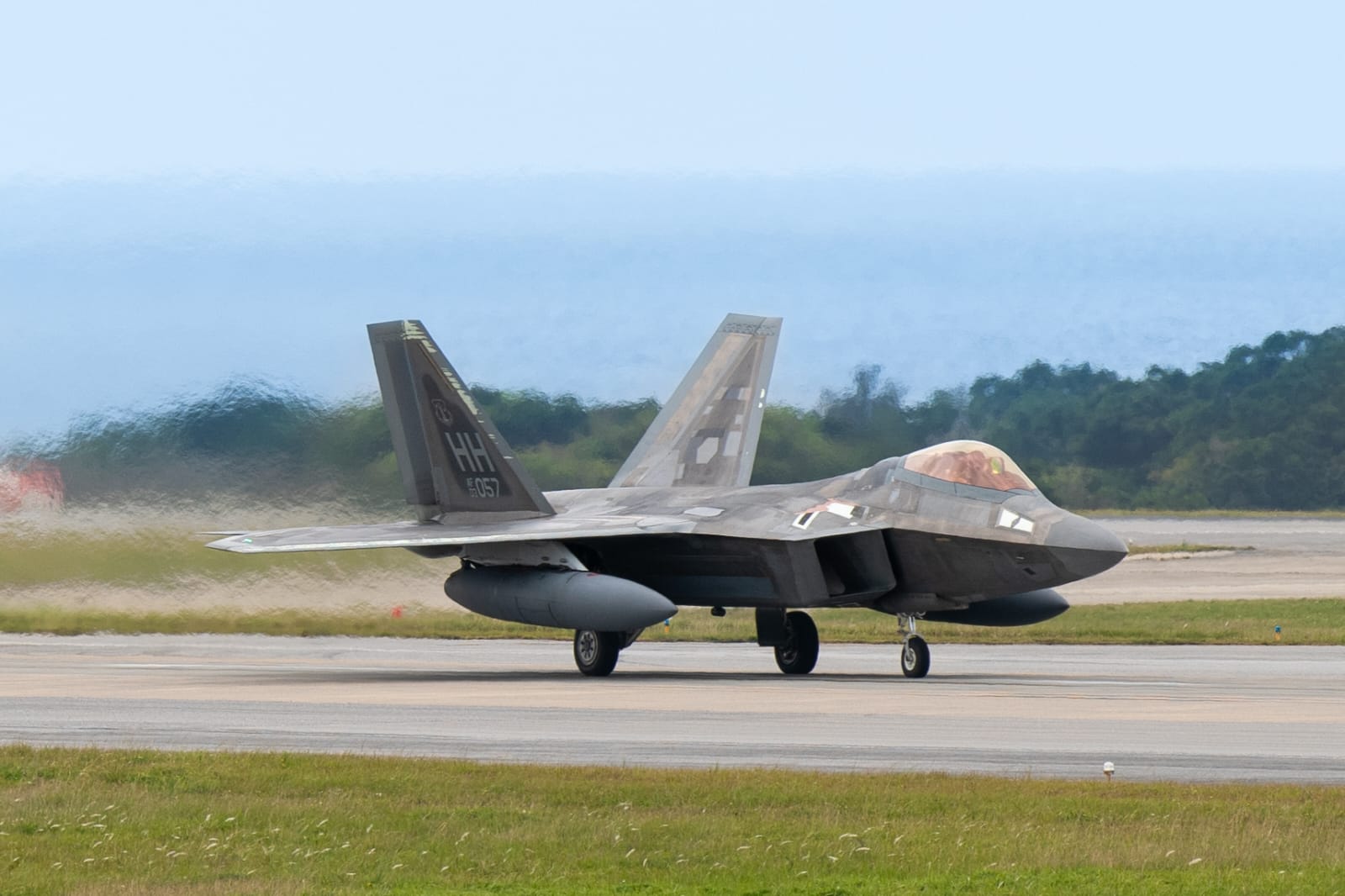As part of an effort to gradually replace the aging 48 F-15 C/Ds of the United States Air Force’s (USAF) 18th Wing at Kadena Air Force Base at Okinawa in Japan, F-22A Raptors landed at the station at a time when tensions with the People’s Republic of China (PRC) are at an all-time high.
The F-22s, belonging to the USAF’s 199th and 19th Fighter Squadrons, appear to be temporary deployments, as the jets have landed at Kadena before – for instance, in May 2018 and November 2022.
While the F-22s in 2018 were from the 525th Fighter Squadron, part of the 3rd Wing at Joint Base Elmendorf-Richardson (JBER) in Alaska, the November 2022 deployment was also from the same formation. The unit at the time could have been the 90th Fighter Squadron.
Okinawa Is A Key Location For War With China
Okinawa is often referred to as the “Keystone of the Pacific,” as it is strategically significant due to its central location to the wider theater of Far East Asia and the Western Pacific.
Located approximately 1448 km from Tokyo, Manila, Seoul, and Hong Kong and 1,931 km west of Guam, Okinawa serves as a critical hub for military operations in the region.
With its extensive network of air bases and naval facilities, it would be vital in conducting air dominance and strategic fighter operations, in both defensive and offensive roles, in the event war breaks out with China.

18 Wing Public Affairs/US Air Force.
Working With Gen 4 & 4.5 Fighters
The USAF also hinted at the operational purpose behind the F-22 deployment there. This has to do with bolstering the existing older aircraft in its inventory to maximize potential before the People’s Liberation Army (PLA) Air Force and Navy fighters, which have a larger and manufacturing-wise scalable stealth aircraft fleet.
It comes at a time when the F-35 is witnessing accidents, delays in upgrades, and the addition of new aircraft, while US lawmakers and USAF planners are debating whether to retire the F-22s or continue upgrading them.
“While deployed to the Keystone of the Pacific, 19th and 199th FS Raptors will work in conjunction with additional heavy, reconnaissance, and fourth generation fighters, and fifth generation fighter assets that are both augmented to and stationed at Kadena to ensure continued steady-state fighter capabilities in the region,” said a statement from Kadena AFB.
In November 2023, F-35s from Hill AFB also arrived at Kadena to “maintain the steady rotation of fighters there in place of retiring F-15C/Ds,” according to a report on Air and Space Forces. At the time, these F-35s from the 4th FS joined the F-35s from the 356th FS already at Kadena. It is not clear if the F-35s are still present there or have flown back to their home bases.
The US Still Needs F-22
The US needs a battle-ready fleet of F-22s and F-35s, as China’s own J-20 reported a high production rate of 120 a year from 40-50 in August 2023.
Moreover, additional J-20 units would also be part of advanced batches and blocks, with upgrades and improved systems from the previous lots. For instance, a twin-seat J-20 variant that has been photographed several times has been assessed to be capable of commanding loyal wingman drones and Might undergo serial production if the PLAAF selects the design.
The F-22 is, however, smaller, and current variants lack an infrared search and track (IRST) system that can fuse with the nose radar and fire air-to-air missiles. Only recently was an F-22 photographed with stealth-shaped external fuel tanks and IR sensor pods near the Mojave Air and Space Port. The IRST feature was originally planned for the F-22 but dropped due to budgetary concerns.
It is not clear if the features will be incorporated on all the F-22s currently in the USAF fleet, but reports from the US suggest that the fighter would largely serve as an incubator and testing ground for sixth-generation technologies. The roughly 180 F-22s are likely to be replaced by crewed Next Generation Air Dominance (NGAD) fighters, of which the USAF wants to buy 200.
But it all comes down to maintaining some short-term fighting potential before China in terms of mass and a large fleet, as the F-22 upgrades with the external IRST and the fighter’s possible retirement plans are firmed up in the long run. The purely air-dominant fighter is also plagued by a notoriously short range that is exacerbated by the “tyranny of distance” in the western Pacific.
- The author can be reached at satamp@gmail.com
- Follow EurAsian Times on Google News